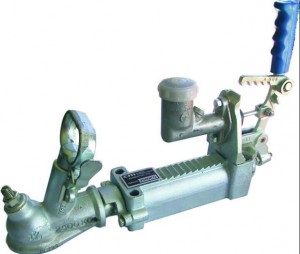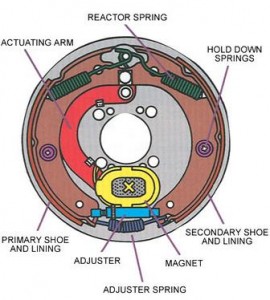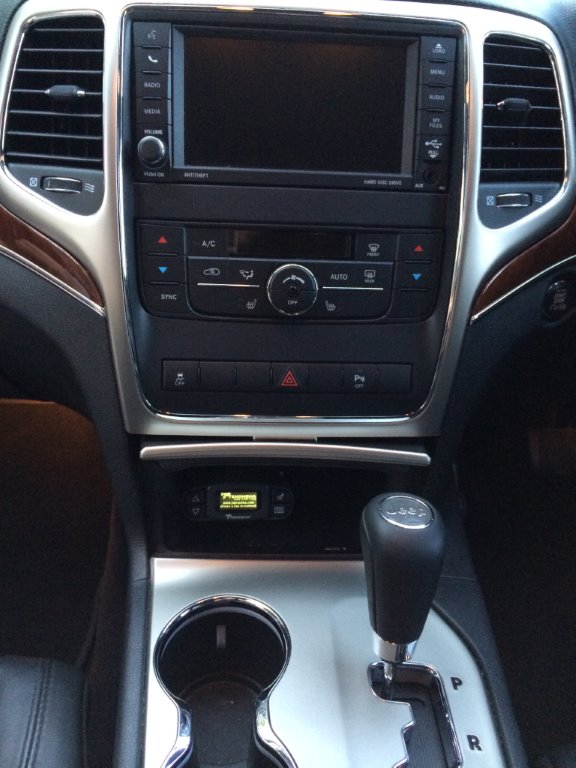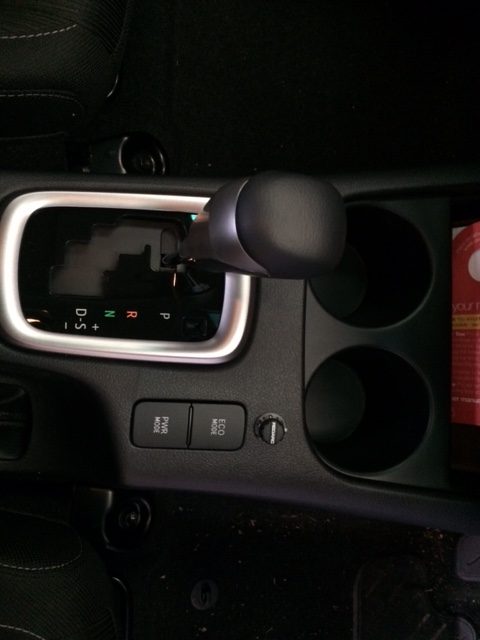Setting up your vehicle electrics for towing

So you need to tow something and are unsure what your vehicle requires? …
Here we have some basic information on the different types of trailer brakes, charge circuits (to charge trailer batteries) and accessory feeds (e.g. fridge wires)
Types of Brakes
Firstly what type of trailer are you towing? Anything over 750kg GTM (Gross trailer mass) will require some sort of brakes. For more information on regulations for your specific trailer, check the Queensland Transport Website.
The main types of brakes are:
- Hydraulic or cable brakes – No electrical accessories are required. The trailer weight pushes on the coupling when stopping and actuates the brakes.
- Electric brakes – These brakes require an electric brake controller. The brakes themselves are electromagnets inside the brake hubs that when energized will move with the brake drum and actuate the brake shoes providing friction to slow the trailer. The higher the voltage the more braking force is created. The brake controller is generally mounted in the driver’s area (some are fitted to the trailer). These receive an electrical brake signal when you apply the brakes and send out a specific voltage to your trailer brakes. Some cheaper units provide voltage that is manually set by the driver and the higher end units use a proportional braking system that will regulate the braking force depending on what the vehicle is doing. i.e. the harder you brake the harder the trailer will brake.
- Electric over Hydraulic brakes – These systems are generally mounted to larger boat trailers and are handy for keeping electrical components out of the water. They use an electrical signal the same as regular electric brakes but uses it to control a hydraulic pump that actuates the brakes. This system will generally have a break-away function incorporated that utilizes a small battery. Its job is to apply the brakes should the trailer detach itself from the vehicle. When setting up your vehicle for this type of braking system it will need an adequate brake controller and a separate constant power feed to run the motor and charge the battery.
Brake controllers GCCEM recommend
Our experienced Gold Coast Auto Electricians have installed many controllers and there are a few standouts on the market which we recommend. Given proportional brake controllers are not a great deal more expensive than a basic unit we only recommend proportional systems and the more popular ones are listed below. All are capable of handling electric and electric/hydraulic brakes plus are compatible with ALKO Electronic Stability Control systems.
- Tekonsha Prodigy P2 – Our most popular unit is an excellent performer. It can provide diagnostic codes to assist in troubleshooting and mounts closely to vehicle panels. The centreline of unit must match the centreline of the vehicle to allow the proportional system to operate.
- Tekonsha Prodigy P3 – The model up from the P2 is also an excellent performer. It has a superior screen and more modern look with push button controls in place of the thumb wheel. When fitting in the removable pouch these will sit out further from the vehicle panel. Again, the centreline of unit must match the centreline of the vehicle.
- Redarc Tow-Pro EBRH-ACCV2 – Recently updated, these controllers work just as well as the above units. The main differences are these are mounted into the dash like a switch with the controller fixed behind the dash in a suitable location. It can be difficult in modern vehicles to find a suitable location to mount these and they can be more labour intensive to install the control head but the units look great when fitted.
Charge Circuits
Caravans and camper trailers will often be fitted with on-board batteries. If you want to charge them while you drive you will need some form of charge circuit.
There are many products available for this purpose such as Voltage sensitive (Smart) relays and DC-DC chargers, however a simple heavy duty solenoid will often do the trick. No matter what product you choose here its function is to charge your trailer battery while your vehicle is running and isolate it when your engine is switched off so you don’t drain your starting battery. You can connect to your trailer via either an Anderson plug or through a 12 pin trailer socket.
Separate Power Feeds
Many caravans require a separate power feed for functions such as Electronic Stability Control or to run the fridge while your vehicle is running. Some of these will need to be connected straight to the battery and some isolated when your vehicle is switched off.
DIY Installs
So that’s a rundown on basic systems but you may be asking how do I install a brake controller or charge circuit myself? I’ve seen the UTube videos, it doesn’t look too hard and I am going to give it a go!
We recommend using an experienced Auto Electrician, however if you do decide to DIY, below is a non-exhaustive list of the more common problems we see on brake controllers self-installed:-
- Using cable that isn’t heavy enough. Cable size is calculated according to distance and current draw, undersized cable will result in voltage drop and systems not working correctly.
- Poor wiring terminations. This may cause terminals to vibrate loose and wires to short out. Poor connections also generate heat that will lead to other issues.
- Incorrect brake signal feed. Modern vehicles are very sensitive and you need to ensure the brake signal is taken from a suitable location. Obtaining an incorrect feed may result in the brake controller not working correctly or potentially damaging the vehicle’s computer.
- Incorrect routing of cables. This can lead to insulation rubbing through and wiring shorting out.
- Insufficient circuit protection. If the fuse/circuit breaker is too small, too big or not present this can lead to further issues.
Before embarking on a DIY install, we recommend that you check the following to minimise surprises if something does go wrong:-
- warranty terms on the part you are installing;
- the installation guide for that particular part;
- your vehicle warranty; and
- your vehicle insurance policy.
It may be a little more expensive to have these systems wired up by our qualified auto electricians but potential issues caused by incorrect installation could be much worse!
Need a hand?
If you need a brake controller on the Gold Coast or any other towing accessories for that matter, feel free to drop into our workshop to discuss the various options for your particular vehicle.




